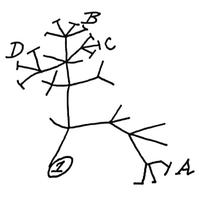From our perspective in OEB, a key result of our history is that we are stewards of world-renowned biodiversity collections and that OEB is the primary intellectual home of those core disciplines within the Life Sciences, whose aim it is to describe patterns of biological diversity, to discover the processes which produce and maintain this diversity, and to understand the role of biological diversity in the resilience of ecosystems.
From its beginnings, the Department of Biology remained intact as one large department until 1967 when the Biology faculty voted to create a new Department called Biochemistry and Molecular Biology (BMB). The creation of BMB initiated the first split in the Harvard Department of Biology.
In February 1971, Biology faculty again voted to set up two committees within the department: Organismic and Evolutionary Biology (OEB) and Cellular and Developmental Biology (CDB). During the years following 1971, the OEB and CDB groups became increasingly distinct, establishing their own graduate programs and making their own faculty appointments (faculty appointments in Biology for curators in the Museum of Comparative Zoology (MCZ) began during this time). By 1982, the two committees officially split, creating two departments.
In 1994, BMB and CDB combined to form the Department of Molecular and Cellular Biology (MCB), from which Stem Cell and Regenerative Biology (SCRB) split off in 2011. Within OEB, the MCZ model of faculty-curators was soon adopted by the Harvard University Herbaria. And, recently, the Arnold Arboretum successfully embraced this same tradition in 2011.
OEB has close ties with the Museum of Comparative Zoology, the Harvard University Herbaria, and the Arnold Arboretum. Today, roughly half of the faculty in OEB have their appointments through these institutions and are curators in one or the other of these allied institutions. OEB also maintains important ties to a number of other academic units at Harvard, including the Department of Earth and Planetary Sciences (EPS), the Department of MCB, the Center for Brain Science (CBS), the FAS Center for Systems Biology (Systems), the School of Engineering and Applied Sciences (SEAS), the T.H. Chan School of Public Health, and the departments of Physics and Mathematics. Specifically, close to half of the OEB faculty are also faculty members in these other departments or centers.
Our faculty and researchers discover patterns of diversity, then explore their full complexity using a variety of leading-edge techniques. We develop predictive models of biology, for both application and understanding. Whether addressing genetics and development, or the functioning of whole organisms in complex ecological communities, we take Dobzhansky’s maxim seriously: Nothing in biology makes sense except in the light of evolution.

